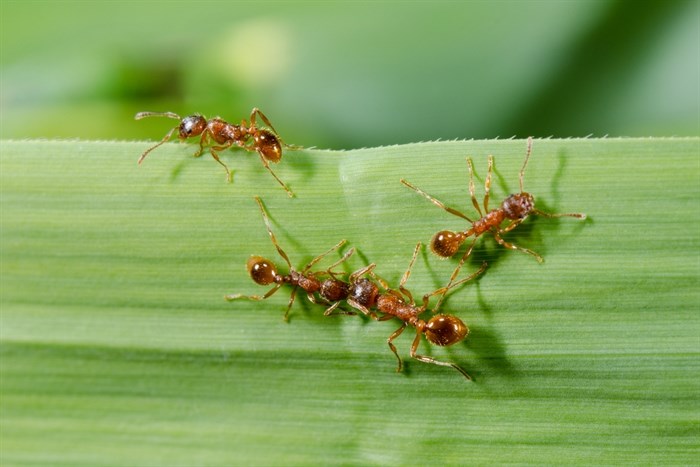
A biologist from Thompson Rivers University will be experimenting with a new concept to control the European fire ant, which has gained a foothold in Naramata.
Image Credit: SUBMITTED / Shutterstock
July 24, 2019 - 1:00 PM
KAMLOOPS - Thompson Rivers University biologist Rob Higgins hopes to test a new concept for treating European fire ant nests later this summer in the South Okanagan.
The biologist treated an outbreak of fire ants in Naramata in 2015 after colonies were discovered in that community in 2013. He and an assistant worked that summer to find a method to eliminate the invasive species and had some success treating the nests with permethrin.
However, that method is only suitable for small-scale applications, and Higgins has another concept he hopes to try later this summer. The ants are temperature sensitive, so Higgins plans to experiment with pushing hot air through the nest in a field test slated for August.
"In Naramata, we found a way to control the ants by digging up their nest and treating with permethrin, but that method only works on a small scale. The Naramata situation calls for a larger treatment method, as well as one that would work for colonies found along stream beds, where permethrin use is prohibited,” Higgins says.
Higgins says he made a visit to Naramata earlier this year and found the colonies appear to be limited to the area previously infested when he last there two years ago, but then he received a report from a resident suggesting they might have moved a short distance away.
“The fire ant continues to be a problem, with new specimens found in new locations each year,” he says, adding the new locations have all been within the ant’s previously identified range.
Higgins believes the Naramata infestation began when bedding or landscaping plants with contaminated soils were brought into the area. The species were also identified in a Burnaby community garden.
Higgins doesn’t believe the fire ant will gain a foothold in B.C.'s southern Interior, as the ant prefers a less dry environment, but he is concerned the species could spread through movement of soil from one place to another.
He says the European fire ant is a species prone to swarming rapidly and stinging when disturbed.
“It can make standing on the grass impossible,” he says. The stings aren’t as painful as a wasp’s but generally occur in multiples if one is standing on a colony.
To contact a reporter for this story, email Steve Arstad or call 250-488-3065 or email the editor. You can also submit photos, videos or news tips to the newsroom and be entered to win a monthly prize draw.
We welcome your comments and opinions on our stories but play nice. We won't censor or delete comments unless they contain off-topic statements or links, unnecessary vulgarity, false facts, spam or obviously fake profiles. If you have any concerns about what you see in comments, email the editor in the link above.
News from © iNFOnews, 2019